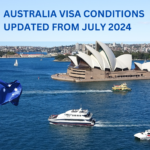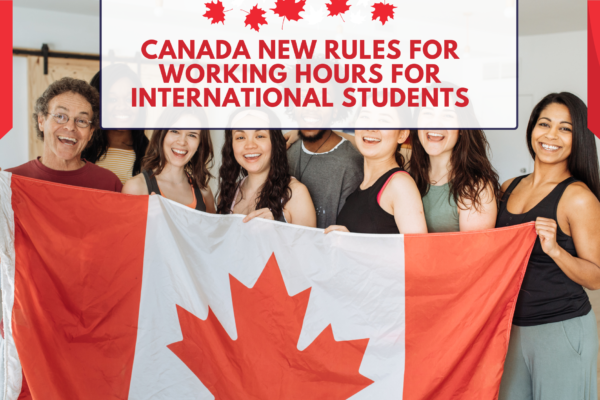
Canada New PR In First Quarter | 121,620 Residents
121,620 new permanent residents arrived in Canada in the first quarter of 2024; 52,720 of them settled in Ontario and 17,745 in British Columbia. Although it’s early in the year, these figures represent a significant decrease from the 145,495 new permanent residents recorded in the first quarter of 2023. This trend suggests a cooling in Canada new PR in first quarter compared to the same period last year. However, it’s worth noting that these numbers are still higher than those recorded in the first quarter of 2022, when Canada welcomed 113,805 new permanent residents. This indicates a general upward trend in Canada new PR in first quarter, albeit with fluctuations. Yearly Comparison of Canada new PR in first Quarter Admissions Year New PRs (Q1) Annual Immigration Targets 2024 121,620 485,000 2023 145,495 465,000 2022 113,805 431,645 2021 70,495 401,000 2020 69,140 341,000 2019 65,955 330,800 2018 80,005 310,000 2017 72,835 300,000 2016 86,235 300,000 2015 51,125 260,000 to 285,000 These figures highlight the varying trends in Canada’s immigration policies and the actual intake of new permanent residents over the past decade. The significant rise in immigration targets from 2015 to 2024 underscores Canada’s commitment to welcoming more immigrants to support its economic and demographic growth. New PR Admissions and Annual Immigration Levels From January to March 2024, Canada issued a total of 135,291 authorizations and visas for permanent residency. This number is down from the 156,272 issued during the same period in 2023. Despite the overall decrease, the Express Entry system, the largest federal economic category of immigration, saw 36,635 new permanent residents, which is a 6% increase from the 34,555 admissions in the first quarter of 2023. This increase highlights the continued effectiveness and popularity of the Express Entry system in attracting skilled immigrants. The success of the Express Entry system underscores the positive trend in Canada New PR In First Quarter statistics, demonstrating its crucial role in driving immigration numbers. The data reaffirms the importance of Canada New PR In First Quarter as a key indicator of immigration trends. Province-Wise Distribution of New PRs in Q1 2024 Ontario, the most populous province in Canada, remained the top destination for new permanent residents, welcoming 52,720 newcomers, which accounts for approximately 44% of all new PRs in the country. Conversely, Manitoba, Newfoundland and Labrador, British Columbia, and Saskatchewan saw the largest declines in new PR admissions. The Canada new PR in first quarter data highlights Ontario’s significant appeal to newcomers, while the other provinces experienced noticeable decreases. This trend in Canada new PR in first quarter statistics underscores the varying regional preferences and economic opportunities across the country. Province New PRs (Q1 2024) New PRs (Q1 2023) Percentage Change Canada 121,620 145,495 -16.41% Ontario 52,720 60,860 -13.37% British Columbia 17,745 24,495 -27.56% Alberta 15,360 17,155 -10.46% Quebec 13,355 16,065 -16.87% Manitoba 5,680 8,855 -35.85% Saskatchewan 5,610 7,395 -24.13% New Brunswick 3,995 2,940 +35.88% Nova Scotia 3,995 3,935 +1.52% Newfoundland and Labrador 1,405 2,045 -31.30% Prince Edward Island 1,330 1,275 +4.31% Yukon 295 345 -14.49% Northwest Territories 115 125 -8% Nunavut 10 10 Unchanged These provincial figures illustrate the diverse regional preferences of new immigrants and highlight the varying capacity and appeal of different provinces. Transition from Temporary to Permanent Residency An essential aspect of Canada’s immigration strategy is facilitating the shift from temporary to permanent status. In the first quarter of 2024, the number of temporary residents transitioning to permanent residence decreased by 24.82% to 7,180, particularly among those who previously held study permits. Additionally, 21,190 temporary residents with Post-graduate Work Permits (PGWPs) made the transition to permanent residency, marking a 17.90% decline compared to the first quarter of 2023. This shift significantly impacts Canada’s demographics and labor force, particularly in the context of Canada New PR In First Quarter. Temporary Resident Status Q1 2024 Q1 2023 Percentage Decline New PRs with Previous IMP Work Permit Status 45,565 54,830 -16.90% New PRs with Previous Post-graduate Work Permit Status 21,190 25,810 -17.90% New PRs with Previous Study Permit Status 7,180 9,550 -24.82% New PRs with Previous Temporary Foreign Worker Program Status 3,710 4,140 -10.39% The decline in the transition from temporary to permanent residency in Canada New PR In First Quarter may be due to several factors, including changes in immigration policies, economic conditions, or the ongoing effects of the global pandemic on migration patterns. The reduced number of study permit holders moving to permanent residency might suggest a more competitive or restrictive environment for international students seeking to remain in Canada after completing their studies. Top Source Countries for New Permanent Residents In the first quarter of 2024, India remained at the forefront as the primary source country for new permanent residents in Canada, accounting for 31% of the total newcomers. Alongside India, China, the Philippines, Afghanistan, and Nigeria also emerged as significant contributors to Canada’s immigrant population. These top five source countries collectively shaped the demographic landscape of Canada’s New PR In First Quarter, reflecting the nation’s diverse and inclusive immigration policies. Country New PRs (Q1 2024) India 37,880 China 8,135 Philippines 7,990 Afghanistan 5,025 Nigeria 4,690 Cameroon 3,725 Iran 3,570 Pakistan 2,630 United States 2,480 Eritrea 2,360 India’s significant contribution to Canada’s immigration numbers highlights the strong ties between the two countries and the attractiveness of Canada as a destination for Indian immigrants. The presence of countries like China, the Philippines, and Nigeria in the top five also reflects Canada’s diverse immigration intake. Canada’s Annual Immigration Targets In the first quarter of 2024, Canada New PR In First Quarter has set ambitious immigration targets for the coming years. In 2024, the country aims to welcome 485,000 new immigrants, with plans to stabilize at 500,000 annual admissions for 2025 and 2026. These targets are integral to Canada’s broader strategy to address demographic challenges, labor market needs, and spur economic growth through immigration. Canada New PR In First Quarter is a key focus in achieving these goals. Detailed Category-Wise Annual Immigration Levels Plan Canada’s immigration targets are broken down…








